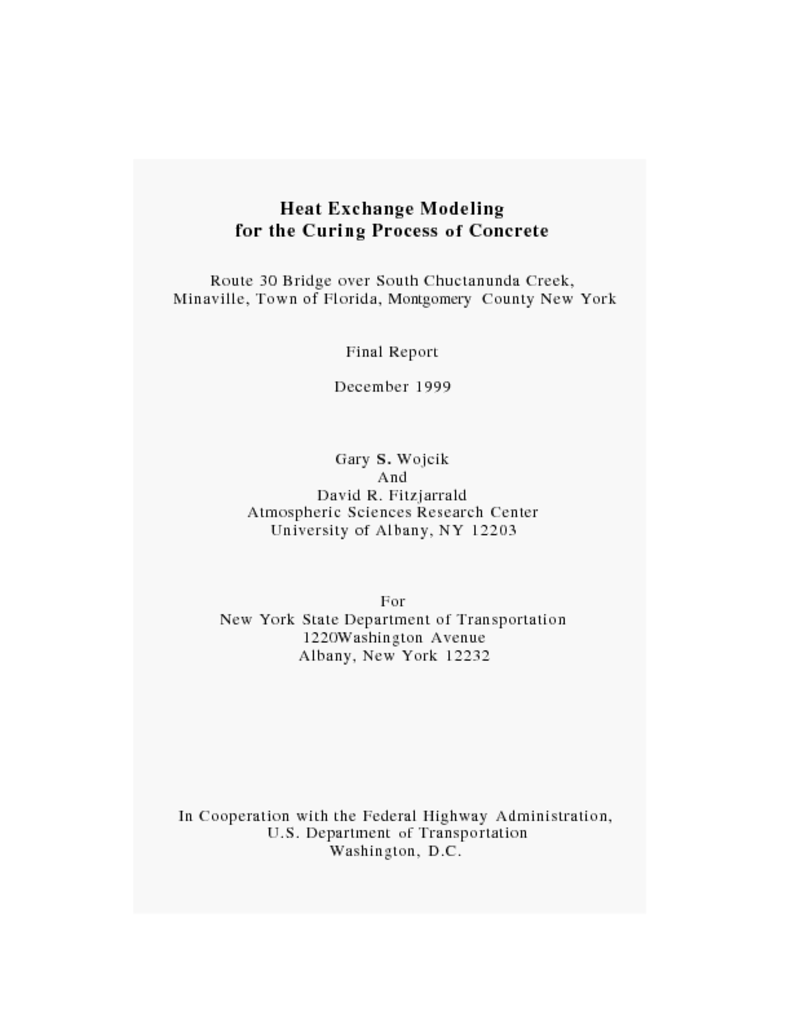This report, written by Gary S. Wojcik and David R. Fitzjarrald of the University of Albany, describes the field campaign and subsequent data analysis for the Route 30 bridge over the South Chuctanunda Creek in Montgomery County, NY. The two purposes of this work were 1.) to make more detailed measurements of the bridge environment than we have done in the past to better understand the energy budget of a curing concrete bridge and 2.) to provide atmospheric boundary conditions to a model of curing concrete. New measurements included direct sensible and latent heat flux below the bridge, top surface concrete heat flux with heat plates, and air temperatures between the beams. We estimate that the amount of heat that was conducted toward the top surface during the peak internal temperatures was around 390 Wn-2. This heart was removed most efficiently by the runoff water heat flux (150Wm-1 while the latent heat flux and net radiation each accounted for about 100Wm-2. Heat loss below the bridge amounts to no more than 15% of the amount of heat removed at the top of the bridge. In computing the runoff water heat flux, we determined that hits the top surface of the bridge does not reach the wet-bulb temperature of the air, as we have assumed in the past. About 95% of the water pumped onto the bridge runs off the bridge, with only 5% evaporating. From our energy budgets, we estimate that after 24 hours, this concrete bridge released about 210 kJ/kg-solid, which is good agreement with our calorimetry estimates.


